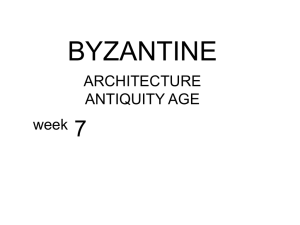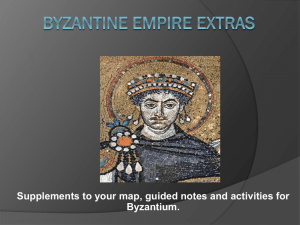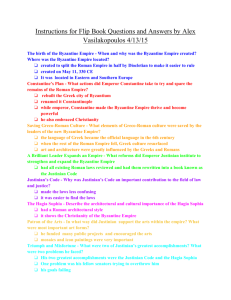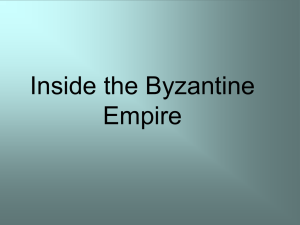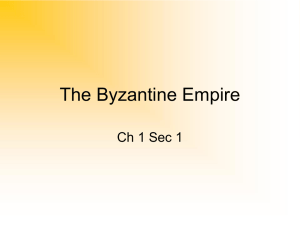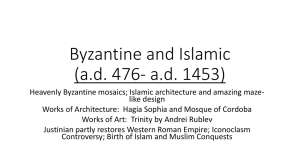Byzantine Empire Quest
advertisement
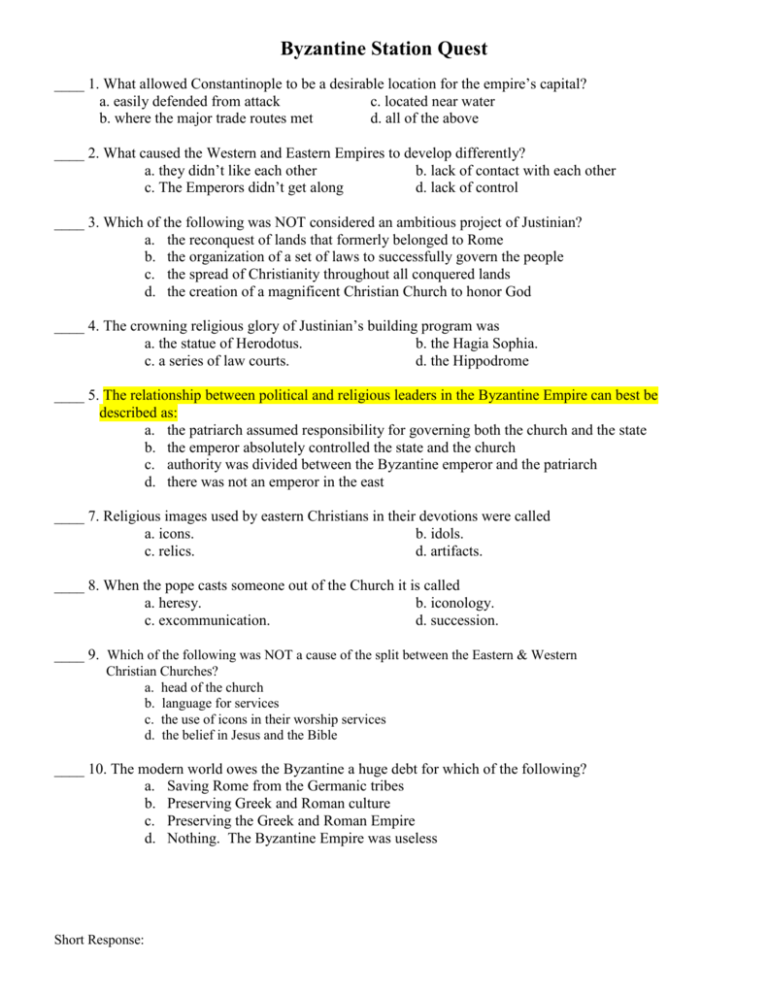
Byzantine Station Quest ____ 1. What allowed Constantinople to be a desirable location for the empire’s capital? a. easily defended from attack c. located near water b. where the major trade routes met d. all of the above ____ 2. What caused the Western and Eastern Empires to develop differently? a. they didn’t like each other b. lack of contact with each other c. The Emperors didn’t get along d. lack of control ____ 3. Which of the following was NOT considered an ambitious project of Justinian? a. the reconquest of lands that formerly belonged to Rome b. the organization of a set of laws to successfully govern the people c. the spread of Christianity throughout all conquered lands d. the creation of a magnificent Christian Church to honor God ____ 4. The crowning religious glory of Justinian’s building program was a. the statue of Herodotus. b. the Hagia Sophia. c. a series of law courts. d. the Hippodrome ____ 5. The relationship between political and religious leaders in the Byzantine Empire can best be described as: a. the patriarch assumed responsibility for governing both the church and the state b. the emperor absolutely controlled the state and the church c. authority was divided between the Byzantine emperor and the patriarch d. there was not an emperor in the east ____ 7. Religious images used by eastern Christians in their devotions were called a. icons. b. idols. c. relics. d. artifacts. ____ 8. When the pope casts someone out of the Church it is called a. heresy. b. iconology. c. excommunication. d. succession. ____ 9. Which of the following was NOT a cause of the split between the Eastern & Western Christian Churches? a. head of the church b. language for services c. the use of icons in their worship services d. the belief in Jesus and the Bible ____ 10. The modern world owes the Byzantine a huge debt for which of the following? a. Saving Rome from the Germanic tribes b. Preserving Greek and Roman culture c. Preserving the Greek and Roman Empire d. Nothing. The Byzantine Empire was useless Short Response: The collapse of the Byzantine Empire can be traced back to the plague. 1.) What did the plague cause that helped to bring down the empire? 2.) What does the fall of the Roman empire and Byzantine empire have in common? Make sure to explain your answers. The Hagia Sophia: by Procopius-The Byzantine emperor Justinian ordered his official court historian, Procopius, to document his ambitious public building program. Procopius wrote On Justinian’s Buildings in 555 in which he described Hagia Sophia, the Church of the Holy Wisdom, in Constantinople. Completed in about 537, this magnificent church was considered the largest Christian building in the world. How would you describe this church in your own words? The church consequently presented a most glorious spectacle, extraordinary to those who beheld it, and altogether incredible to those who are told of it. In height it rises to the very heavens, and overtops the neighbouring buildings like a ship anchored among them: it rises above the rest of the city, which it adorns, while it forms a part of it. . . . . A spherical shaped dome . . . makes it exceedingly beautiful; from the lightness of the building it does not appear to rest upon a solid foundation, but to cover the place beneath as though it were suspended from heaven by the fabled golden chain. . . . The sight causes men to constantly change their point of view, and the spectator can nowhere point to any part which he admires more than the rest… The entire ceiling is covered with pure gold, which adds glory to its beauty, though the rays of light reflected upon the gold from the marble surpass it in beauty; there are two porticos on each side, which do not in any way dwarf the size of the church, but add to its width. . . . Whoever enters there to worship perceives at once that it is not by any human strength or skill, but by the favour of God that this work has been perfected. Procopius, Of the Buildings of Justinian, translated by Aubrey Stewart (London: Palestine Pilgrims’ Text Society, 1888), 2–5, 9– 11. Reprinted in Peter N. Stearns, ed., Documents in World History, Vol. 1 (New York: Harper Collins, 1988), 156–158. _____ 11. The main idea of the reading “The Hagia Sophia” is a. to glorify the emperor Justinian for his military conquests b. to glorify the emperor and the favor God bestowed on him c. to highlight the architectural features of the church d. to inform people about the features of Constantinople _____ 12. The main function of the second paragraph (“The church consequently . . .”) is to a. highlight the architectural importance Justinian’s conquests b. emphasize the feeling of being on solid ground when visiting the Hagia Sophia c. detail the enormous sum paid to construct the building d. describe a sensation of light from the heavens when visiting the Hagia Sophia _____ 13. The “two porticos” described in paragraph 3 a. supported the roof of the structure b. provided a shade filled courtyard for relaxation c. separated the men and women for the purpose of worship d. housed the gold stored within the church How does the Hagia Sophia demonstrate (show) the “favour of God” towards the Byzantine empire?

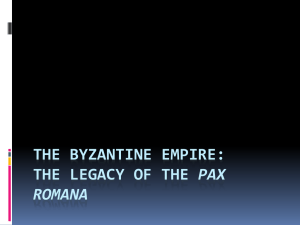
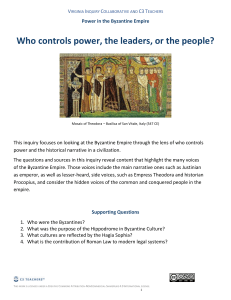
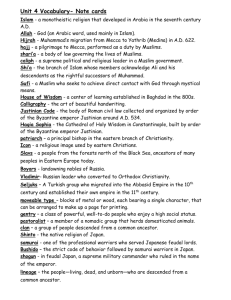

![Procopios: on the Great Church, [Hagia Sophia]](http://s3.studylib.net/store/data/007652379_2-ff334a974e7276b16ede35ddfd8a680d-300x300.png)
